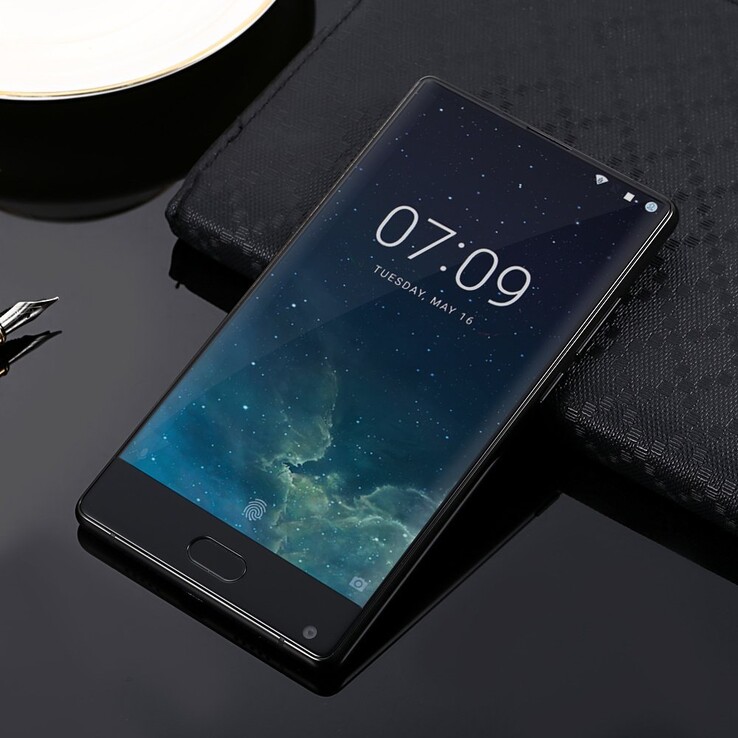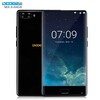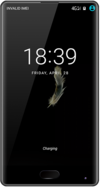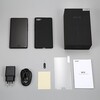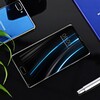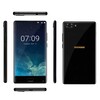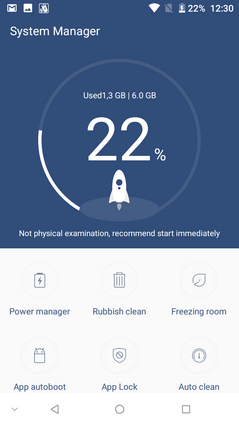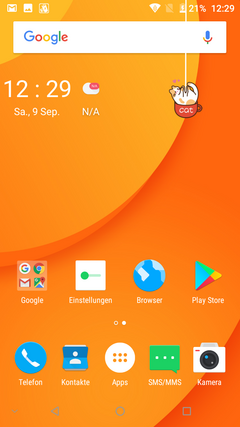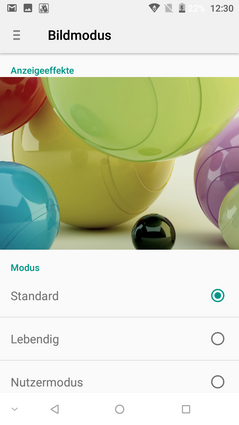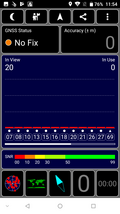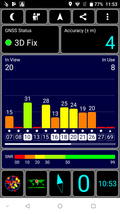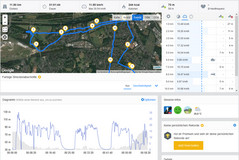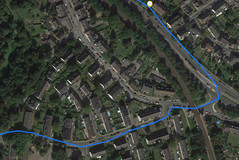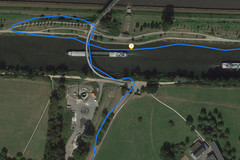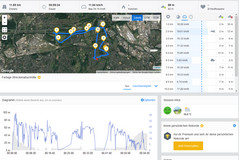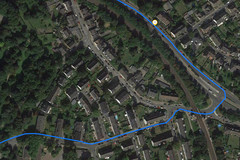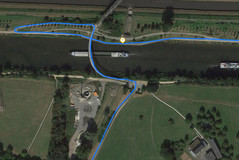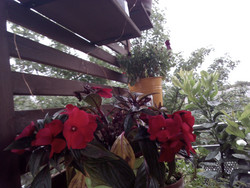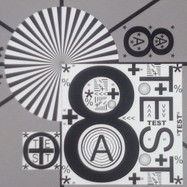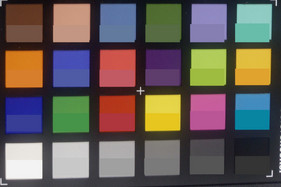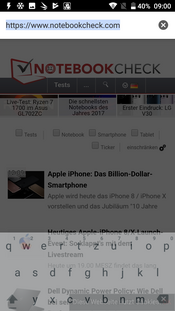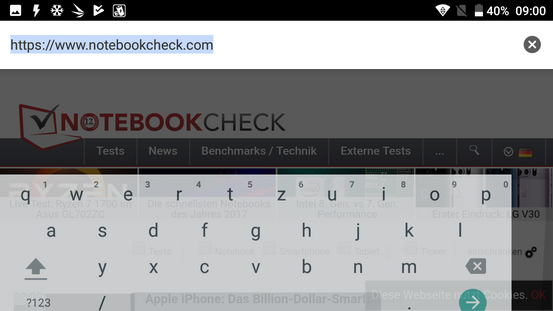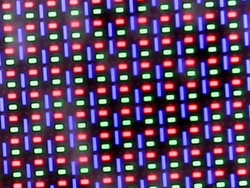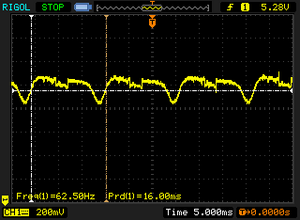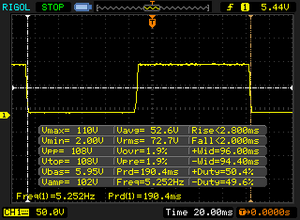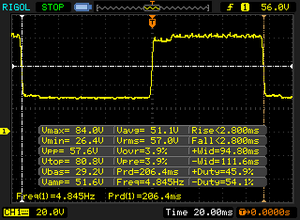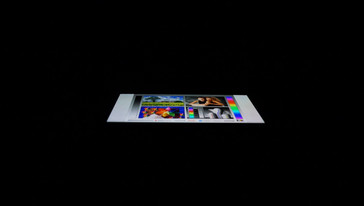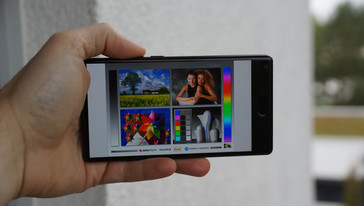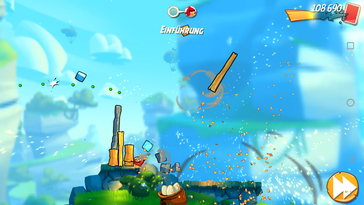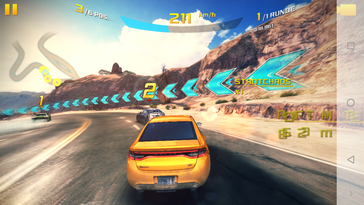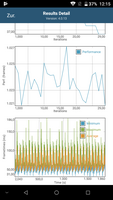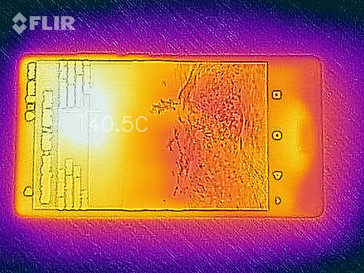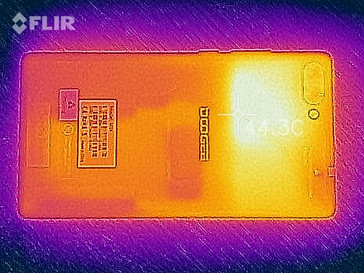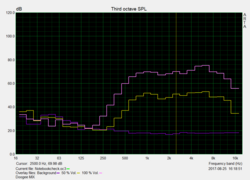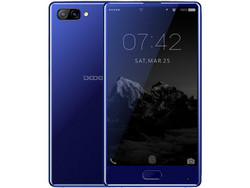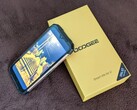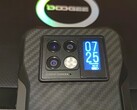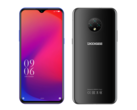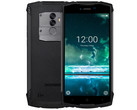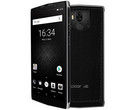Doogee Mix Smartphone Review
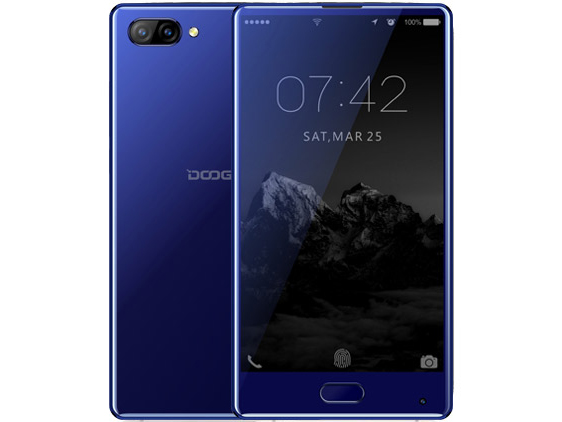
For the original German article, see here.
It is either very clever or very cheeky to call a bezel-less smartphone ‘Mix’, since the Xiaomi Mi Mix pioneered this feature when it launched about one year ago. The Chinese manufacturer Doogee does not mind this similarity and offers a 5.5-inch smartphone with slim bezels under this very name. The Doogee Mix with its ~ $230 price tag is situated in the lower mid-range and aims to impress potential buyers with a dual camera on the back and ample memory. We are about to find out if it does indeed impress us in our laboratory test setups. In contrast to Xiaomi’s Mix, the Doogee Mix is officially available in Europe and the US, which is nice as it comes with a retailer’s warranty and guarantee.
The Doogee Mix competes against similarly priced smartphones that, however, do not feature bezel-less screens: the Nokia 6, the Oukitel K6000 Plus, and the Honor 6X. Furthermore, we will see how the Mix does against the Wiko WIM, a considerably more expensive upper mid-range device.
Case
The case of the Doogee Mix is defined by a 5.5-inch screen with slim bezels on three sides. The front-facing camera moves down next to the fingerprint reader. Buyers have the option of either a black or a blue color for the case. The front and back are protected by Gorilla Glass, making the back prone to fingerprints. The frame material is premium steel. The 198 grams (~7 oz) phone cannot be considered a lightweight, but it feels good in the hands. The phone does not cave in to pressure or torsion thanks to its excellent stability.
Equipment
The ample 6 GB of RAM and 64 GB of internal storage fortify the Doogee Mix’s good impressions, given its price range. Most competitors are barely equipped with half of that. The Mix can handle either two SIM cards or one SIM card and one microSD card, depending on the user’s preference or situation. The SD card can be formatted either as internal storage for additional storage for apps and app data, or as external storage.
The micro USB port supports USB-OTG. HotKnot enables users to share files with nearby devices. It is a technology that is similar to, but not compatible with NFC and is therefore only rarely useful.
Software
The Mix comes with DoogeeOS, an OS based on Android 7.0 with slight customizations. Security patches are pretty much up to date as of August 5 2017. In several cases, users complained about issues with launching apps or a stuttering performance, but we could not observe these issues.
On the home screen, users are greeted by either an animated cat or a GameBoy that are seemingly hanging by a thread from the top of the screen. This probably appeals to the vast majority of the Asian market, but users are able to deactivate this gimmick. Touching these animations will trigger a menu where users can change the design language more to their liking. Luckily, Doogee keeps their bloatware at a minimum. There is DG Xender, which is an app for transferring files to other smartphones, and a system manager for cleaning up the smartphone.
Communication and GPS
The 802.11 b/g/n Wi-Fi standards are supported as can be expected in this price range. The Doogee Mix transfers files quickly in our standardized tests. The signal reaches full strength in close proximity to the router and websites are loaded fairly quickly. At a distance of 10 meters (32.8 ft) and through three walls, the signal strength drops down to half and the Internet browsing speed suffers a little. LTE Cat.6 is on board, but with only five LTE bands (B1/B3/B7/B8/B20), customers might struggle a little to get maximum speeds outside of Central Europe. We have good reception inside of our building using the Vodafone carrier (ranked 2nd among three carriers for best coverage in Germany).
| Networking | |
| iperf3 transmit AX12 | |
| Wiko WIM | |
| Xiaomi Mi Mix | |
| Nokia 6 | |
| Doogee Mix | |
| Honor 6X | |
| Oukitel K6000 Plus | |
| iperf3 receive AX12 | |
| Wiko WIM | |
| Xiaomi Mi Mix | |
| Nokia 6 | |
| Honor 6X | |
| Doogee Mix | |
| Oukitel K6000 Plus | |
GPS is unable to locate us indoors, although we can get quite a quick fix on our location outdoors, with a good accuracy of 4 meters (13.1 ft). In our bicycle trip field test, we let the test device compete against the Garmin Edge 500, a professional navigation system. The Doogee Mix measures a longer distance of 50 meters (54.7 yards) than the Garmin Edge 500. The reason for that is that it often locates us next to the actual path, resulting in small ‘detours’. The meter points set by the Doogee Mix’s GPS module become obvious when looking at the bendy path picture. They are considerably less accurate and are set less often than the ones by the Garmin Edge 500, hence not as reliable as we would like to see it.
Telephony and call quality
The Doogee Mix uses the standard Google Android dialer app.
Sound quality is solid. The conversation partner is clearly comprehensible, although the sound produced by the earpiece could be louder, more natural and with less background roar. The microphone amplifies our voices well. In hands-free mode, the conversation partner sounds clear and comprehensible, but the microphone produces disturbing noises.
Cameras
The Doogee Mix has a dual-camera setup on the back consisting of one 16 MP and one 8 MP sensor allowing for 2x optical zoom. The marketing promise of a blurring effect is simply due to a filter that makes the pictures become fuzzy towards the borders. This can be activated manually.
The pictures are poor in detail and vibrancy compared to high-quality smartphone cameras and color reproduction is shifted towards the colder spectrum. Dynamic range is moderate in very bright and dark areas. The pictures look rather dark. The camera hardware is definitely not made for ambitious photographers, but it will do for some snapshots. The dual-camera setup with its 2x optical zoom is more that we expect from this price segment. In bad light conditions, pictures get very noisy without getting much brighter. Curiously, Doogee does not mention the 4K video recording capabilities in the Mix’s spec sheet. Video quality is good, but again very dark. The automatic exposure control is snappy but apparently incremental and not smooth.
The pictures taken by the 5 MP front-facing camera are not sharp and have a blue cast. Darker areas are brightened up reasonably well, but bright areas are often overexposed.
The subjective observations are fortified by our laboratory testing. The reference image seems pale and lack sharpness. Borders and surfaces are grainy in both grayscales and color images. Black lines look more like dark gray.
Accessories and warranty
A power adapter, a USB-cable, a SIM card tool, an 8 GB USB flash drive, a protective case cover and even a protective glass cover are supplied in the box.
The Doogee Mix does not need to be imported and comes with a standard retailer's warranty and guarantee. Please see our Guarantees, Return Policies & Warranties FAQ for country-specific information.
Input devices and handling
Gboard by Google is the standard keyboard app, but it can easily be replaced by an app of the user’s preference by downloading and installing it from the Google Play Store.
Even in the corners, touchscreen sensitivity is good and inputs are registered reliably. Out of the box, the device comes with a screen protector that is hard to remove and unfortunately is too small for the screen.
The fingerprint reader is quick, reliable and recognizes fingerprints from all angles. It can be programmed to function as another (limited) input device, for example it can be used to hide the on-screen menu buttons. The fingerprint reader can, unfortunately, only execute two different commands; hence, users must choose whether they would like to be able to long-press to get to the home screen or to get to the multi-tasking screen for recently used apps.
Doogee includes a number of gesture control options, e.g. turning the phone around to mute or touching the phone with three fingers for a screenshot. Some gestures work very well, but using the proximity sensor to scroll through the image gallery could not be bothered to work.
Display
Full HD (1920x1080 pixels) is considered standard in almost every price segment for smartphones nowadays. The Doogee Mix lures customers with a carrot, as it is furnished with a trendy AMOLED screen, and punishes them with a stick, because it is only 1280x720 pixels. The maximum brightness of 354 cd/m² is moderate. The Nokia 6 or the Honor 6X offer much brighter screens. The 90% illumination is regular enough to make large color surfaces appear uniformly bright.
Due to pulse width modulation (PWM) the screen fluctuates between on and off 62.5 times per second when brightness is decreased, either automatically or by manual input. This frequency is slow enough to be recognized as a disturbing flicker by the eyes.
| |||||||||||||||||||||||||
Brightness Distribution: 90 %
Contrast: ∞:1 (Black: 0 cd/m²)
ΔE ColorChecker Calman: 4.9 | ∀{0.5-29.43 Ø4.78}
ΔE Greyscale Calman: 3.9 | ∀{0.09-98 Ø5}
Gamma: 2.33
CCT: 7260 K
| Doogee Mix AMOLED, 1280x720, 5.5" | Nokia 6 IPS, 1920x1080, 5.5" | Wiko WIM AMOLED, 1920x1080, 5.5" | Oukitel K6000 Plus IPS, 1920x1080, 5.5" | Honor 6X IPS, 1920x1080, 5.5" | Xiaomi Mi Mix IPS, 2040x1080, 6.4" | |
|---|---|---|---|---|---|---|
| Screen | -3% | -9% | -75% | 12% | 34% | |
| Brightness middle (cd/m²) | 358 | 512 43% | 344 -4% | 369 3% | 547 53% | 577 61% |
| Brightness (cd/m²) | 354 | 501 42% | 353 0% | 352 -1% | 540 53% | 576 63% |
| Brightness Distribution (%) | 90 | 94 4% | 90 0% | 87 -3% | 94 4% | 89 -1% |
| Black Level * (cd/m²) | 0.36 | 0.52 | 0.57 | 0.42 | ||
| Colorchecker dE 2000 * | 4.9 | 6.4 -31% | 5.7 -16% | 10.5 -114% | 5.1 -4% | 2.7 45% |
| Colorchecker dE 2000 max. * | 11.8 | 10.9 8% | 12.2 -3% | 21.4 -81% | 9.1 23% | 6.9 42% |
| Greyscale dE 2000 * | 3.9 | 7.2 -85% | 5.1 -31% | 13.9 -256% | 6.2 -59% | 4.2 -8% |
| Gamma | 2.33 94% | 2.28 96% | 2.73 81% | 2.51 88% | 2.09 105% | 2.23 99% |
| CCT | 7260 90% | 7904 82% | 7407 88% | 12118 54% | 6546 99% | 7287 89% |
| Contrast (:1) | 1422 | 710 | 960 | 1374 |
* ... smaller is better
Screen Flickering / PWM (Pulse-Width Modulation)
| Screen flickering / PWM detected | 62.5 Hz | ||
The display backlight flickers at 62.5 Hz (worst case, e.g., utilizing PWM) . The frequency of 62.5 Hz is very low, so the flickering may cause eyestrain and headaches after extended use. In comparison: 53 % of all tested devices do not use PWM to dim the display. If PWM was detected, an average of 8095 (minimum: 5 - maximum: 343500) Hz was measured. | |||
In theory, AMOLED screens can reach a contrast ratio of infinity, because single pixels can be completely turned off when they display pure black and the screen does not have a backlight. This leads to perfect blacks and saturated colors. Many color parameters can be adjusted via the Miravision settings to the customer’s preferences.
We assess the display in more detail by spectrophotometer and CalMAN software. There’s a slight blue hue out of the box, but colors are reproduced very accurately. Only shades of red exhibit a high standard deviation. Even the AdobeRGB color space is well covered.
Display Response Times
| ↔ Response Time Black to White | ||
|---|---|---|
| 4.8 ms ... rise ↗ and fall ↘ combined | ↗ 2.8 ms rise | |
| ↘ 2 ms fall | ||
| The screen shows very fast response rates in our tests and should be very well suited for fast-paced gaming. In comparison, all tested devices range from 0.1 (minimum) to 240 (maximum) ms. » 16 % of all devices are better. This means that the measured response time is better than the average of all tested devices (20.2 ms). | ||
| ↔ Response Time 50% Grey to 80% Grey | ||
| 5.6 ms ... rise ↗ and fall ↘ combined | ↗ 2.8 ms rise | |
| ↘ 2.8 ms fall | ||
| The screen shows very fast response rates in our tests and should be very well suited for fast-paced gaming. In comparison, all tested devices range from 0.165 (minimum) to 636 (maximum) ms. » 17 % of all devices are better. This means that the measured response time is better than the average of all tested devices (31.6 ms). | ||
There are no issues in outdoor use on cloudy days thanks to the high contrast display. The display remains good even at low viewing angles. There are some minor brightness issues at extreme viewing angles, but they are not as pronounced as in other smartphones of this price segment.
Performance
We find the novel Mediatek Helio P25 octa-core SoC with clock speeds of up to 2.6 GHz quite interesting and powerful for this price range. The processor unit consists of two quad-core clusters, one of which clocks lower and takes on less demanding tasks more energy efficiently. Our test device is comparable to the more expensive Wiko WIM. The high-end SoC of the significantly more expensive, tri-bezel-less Xiaomi Mi Mix is considerably snappier.
The clock speeds of up to 900 MHz of the ARM Mali-T880 MP2 graphics unit leaves its similarly priced competitors well behind.
| AnTuTu v6 - Total Score (sort by value) | |
| Doogee Mix | |
| Nokia 6 | |
| Wiko WIM | |
| Oukitel K6000 Plus | |
| Honor 6X | |
| Xiaomi Mi Mix | |
| PCMark for Android | |
| Work performance score (sort by value) | |
| Doogee Mix | |
| Nokia 6 | |
| Wiko WIM | |
| Oukitel K6000 Plus | |
| Honor 6X | |
| Xiaomi Mi Mix | |
| Work 2.0 performance score (sort by value) | |
| Doogee Mix | |
| Nokia 6 | |
| Wiko WIM | |
| Oukitel K6000 Plus | |
| Geekbench 4.4 | |
| 64 Bit Single-Core Score (sort by value) | |
| Doogee Mix | |
| Nokia 6 | |
| Wiko WIM | |
| Oukitel K6000 Plus | |
| 64 Bit Multi-Core Score (sort by value) | |
| Doogee Mix | |
| Nokia 6 | |
| Wiko WIM | |
| Oukitel K6000 Plus | |
| Compute RenderScript Score (sort by value) | |
| Doogee Mix | |
| Oukitel K6000 Plus | |
| GFXBench (DX / GLBenchmark) 2.7 | |
| T-Rex Onscreen (sort by value) | |
| Doogee Mix | |
| Nokia 6 | |
| Wiko WIM | |
| Oukitel K6000 Plus | |
| Honor 6X | |
| Xiaomi Mi Mix | |
| 1920x1080 T-Rex Offscreen (sort by value) | |
| Doogee Mix | |
| Nokia 6 | |
| Wiko WIM | |
| Oukitel K6000 Plus | |
| Honor 6X | |
| Xiaomi Mi Mix | |
| GFXBench 3.0 | |
| on screen Manhattan Onscreen OGL (sort by value) | |
| Doogee Mix | |
| Nokia 6 | |
| Wiko WIM | |
| Oukitel K6000 Plus | |
| Honor 6X | |
| Xiaomi Mi Mix | |
| 1920x1080 1080p Manhattan Offscreen (sort by value) | |
| Doogee Mix | |
| Nokia 6 | |
| Wiko WIM | |
| Oukitel K6000 Plus | |
| Honor 6X | |
| Xiaomi Mi Mix | |
| GFXBench 3.1 | |
| on screen Manhattan ES 3.1 Onscreen (sort by value) | |
| Doogee Mix | |
| Nokia 6 | |
| Wiko WIM | |
| Oukitel K6000 Plus | |
| Honor 6X | |
| Xiaomi Mi Mix | |
| 1920x1080 Manhattan ES 3.1 Offscreen (sort by value) | |
| Doogee Mix | |
| Nokia 6 | |
| Wiko WIM | |
| Oukitel K6000 Plus | |
| Honor 6X | |
| Xiaomi Mi Mix | |
| GFXBench | |
| on screen Car Chase Onscreen (sort by value) | |
| Doogee Mix | |
| Nokia 6 | |
| Wiko WIM | |
| Oukitel K6000 Plus | |
| Honor 6X | |
| Xiaomi Mi Mix | |
| 1920x1080 Car Chase Offscreen (sort by value) | |
| Doogee Mix | |
| Nokia 6 | |
| Wiko WIM | |
| Oukitel K6000 Plus | |
| Honor 6X | |
| Xiaomi Mi Mix | |
Browsing performance on the Doogee Mix is snappier compared to its competitors.
| JetStream 1.1 - Total Score | |
| Xiaomi Mi Mix (Chrome 55) | |
| Wiko WIM (Chrome Version 59) | |
| Honor 6X (Chrome 56.0.2924.87) | |
| Doogee Mix (Chrome 60) | |
| Oukitel K6000 Plus (Standard Browser 7.0) | |
| Nokia 6 (Chrome 59.0.3071.125) | |
| Octane V2 - Total Score | |
| Xiaomi Mi Mix (Chrome 55) | |
| Wiko WIM (Chrome Version 59) | |
| Honor 6X (Chrome 56.0.2924.87) | |
| Doogee Mix (Chrome 60) | |
| Oukitel K6000 Plus (Standard Browser 7.0) | |
| Nokia 6 (Chrome 59.0.3071.125) | |
| Mozilla Kraken 1.1 - Total | |
| Oukitel K6000 Plus (Standard Browser 7.0) | |
| Nokia 6 (Chrome 59.0.3071.125) | |
| Doogee Mix (Chrome 60) | |
| Honor 6X (Chrome 56.0.2924.87) | |
| Wiko WIM (Chrome Version 59) | |
| Xiaomi Mi Mix (Chrome 55) | |
| WebXPRT 2015 - Overall | |
| Xiaomi Mi Mix (Chrome 55) | |
| Doogee Mix (Chrome 60) | |
| Honor 6X (Chrome 56.0.2924.87) | |
| Nokia 6 (Chrome 59.0.3071.125) | |
* ... smaller is better
Our Toshiba Exceria Pro M501 reference microSD card shows quick reading and writing speeds, but it is not even close to the maximum transfer speeds.
Accessing the internal memory in the Doogee Mix is very quick. Subjectively, loading times are not too long.
| Doogee Mix | Nokia 6 | Wiko WIM | Oukitel K6000 Plus | Honor 6X | Xiaomi Mi Mix | |
|---|---|---|---|---|---|---|
| AndroBench 3-5 | -17% | -6% | -5% | 23% | 43% | |
| Sequential Read 256KB (MB/s) | 249 | 273.1 10% | 272.1 9% | 278.6 12% | 283.4 14% | 409.9 65% |
| Sequential Write 256KB (MB/s) | 165 | 77.1 -53% | 136.7 -17% | 190.4 15% | 73.8 -55% | 161.3 -2% |
| Random Read 4KB (MB/s) | 66.5 | 33.8 -49% | 38.1 -43% | 64.6 -3% | 39.55 -41% | 116.6 75% |
| Random Write 4KB (MB/s) | 11.2 | 11.34 1% | 13.34 19% | 9.44 -16% | 45.05 302% | 15.15 35% |
| Sequential Read 256KB SDCard (MB/s) | 78 ? | 84.6 8% | 83.8 7% | 72.2 ? -7% | 52 ? -33% | |
| Sequential Write 256KB SDCard (MB/s) | 69.4 ? | 56.6 -18% | 61.4 -12% | 49.21 ? -29% | 34.53 ? -50% |
Games
The graphically demanding game Asphalt 8 runs quite smoothly in high detail settings. Consequently, simpler games such as Angry Birds 2 do not pose any issue to the phone’s performance.
The smartphone controls, i.e. position sensor and touchscreen, are responsive enough for gaming.
| Asphalt 8: Airborne | |||
| Settings | Value | ||
| high | 29 fps | ||
| very low | 30 fps | ||
| Dead Trigger 2 | |||
| Settings | Value | ||
| high | 30 fps | ||
Emissions
Temperature
According to our measurements, the Doogee Mix reaches at most 40.3 °C (104.5 °F) under load. This is a noticeable temperature rise and it might get a little too warm in summer when carried in a pocket. Aside from this, we cannot see any issues with the temperature. When idle, the maximum temperature of 35.2 °C (95.3 °F) is hardly noticeable.
We do not expect to see any throttling, even under heavy load, as we can see in our GFXBench battery test Manhattan 3.1.
(+) The maximum temperature on the upper side is 38.6 °C / 101 F, compared to the average of 35.2 °C / 95 F, ranging from 21.9 to 247 °C for the class Smartphone.
(±) The bottom heats up to a maximum of 40.3 °C / 105 F, compared to the average of 34 °C / 93 F
(±) In idle usage, the average temperature for the upper side is 33.8 °C / 93 F, compared to the device average of 32.9 °C / 91 F.
Speaker
The speaker is located on the bottom edge. It gets moderately loud with 81.8 dB(A). Deep mids and bases are basically non-existent, hence the speaker sounds a little shallow. Mids and highs are more or less in balance and save the overall sound from being uncomfortable. The speaker will do for a quick glimpse into a video or music clip. The use of a pair of ear-phones that can be plugged into the 3.5 mm audio jack or a Bluetooth speaker are recommended for comfortable, clean audio quality.
Doogee Mix audio analysis
(±) | speaker loudness is average but good (81.8 dB)
Bass 100 - 315 Hz
(-) | nearly no bass - on average 38.6% lower than median
(±) | linearity of bass is average (8.3% delta to prev. frequency)
Mids 400 - 2000 Hz
(+) | balanced mids - only 4% away from median
(±) | linearity of mids is average (8.2% delta to prev. frequency)
Highs 2 - 16 kHz
(+) | balanced highs - only 4% away from median
(+) | highs are linear (5.1% delta to prev. frequency)
Overall 100 - 16.000 Hz
(±) | linearity of overall sound is average (27.4% difference to median)
Compared to same class
» 71% of all tested devices in this class were better, 5% similar, 24% worse
» The best had a delta of 11%, average was 35%, worst was 134%
Compared to all devices tested
» 83% of all tested devices were better, 4% similar, 13% worse
» The best had a delta of 4%, average was 24%, worst was 134%
Honor 6X audio analysis
(±) | speaker loudness is average but good (81.9 dB)
Bass 100 - 315 Hz
(-) | nearly no bass - on average 21.7% lower than median
(±) | linearity of bass is average (10.2% delta to prev. frequency)
Mids 400 - 2000 Hz
(±) | higher mids - on average 8.4% higher than median
(±) | linearity of mids is average (7.8% delta to prev. frequency)
Highs 2 - 16 kHz
(±) | higher highs - on average 6.7% higher than median
(+) | highs are linear (5.8% delta to prev. frequency)
Overall 100 - 16.000 Hz
(±) | linearity of overall sound is average (29.1% difference to median)
Compared to same class
» 76% of all tested devices in this class were better, 3% similar, 21% worse
» The best had a delta of 11%, average was 35%, worst was 134%
Compared to all devices tested
» 87% of all tested devices were better, 2% similar, 11% worse
» The best had a delta of 4%, average was 24%, worst was 134%
Frequeny diagram in comparison (Toggle check boxes on/off!)
Battery runtime
Energy consumption
The Doogee Mix is a more potent device than we expected from its RRP. Although while idling, the energy consumption is fairly high, it is very efficient under load. After a couple of days in stand-by, the battery runs down too fast for our taste.
| Off / Standby | |
| Idle | |
| Load |
|
Key:
min: | |
| Doogee Mix 3360 mAh | Nokia 6 3000 mAh | Wiko WIM 3200 mAh | Oukitel K6000 Plus 6080 mAh | Honor 6X 3340 mAh | Xiaomi Mi Mix 4400 mAh | |
|---|---|---|---|---|---|---|
| Power Consumption | -2% | 19% | -33% | -5% | -80% | |
| Idle Minimum * (Watt) | 1.13 | 0.63 44% | 0.93 18% | 0.88 22% | 0.82 27% | 0.87 23% |
| Idle Average * (Watt) | 1.7 | 1.75 -3% | 1.28 25% | 2.02 -19% | 2 -18% | 2.16 -27% |
| Idle Maximum * (Watt) | 1.74 | 1.87 -7% | 1.37 21% | 2.09 -20% | 2.03 -17% | 2.28 -31% |
| Load Average * (Watt) | 2.78 | 3.56 -28% | 2.39 14% | 5.33 -92% | 3.34 -20% | 9.21 -231% |
| Load Maximum * (Watt) | 5.01 | 5.85 -17% | 4.25 15% | 7.74 -54% | 4.92 2% | 11.76 -135% |
* ... smaller is better
Battery runtime
The 3,360 mAh battery is a little bigger than most of its competitors, except the Oukitel K600 Plus. A Wi-Fi runtime of 9:33 hours is a good value, but the Nokia 6 gets significantly more runtime out of its smaller battery. Customers should still easily get two full days of regular use with the Doogee Mix. It takes two hours for a full charge using the supplied power adapter.
| Doogee Mix 3360 mAh | Nokia 6 3000 mAh | Wiko WIM 3200 mAh | Oukitel K6000 Plus 6080 mAh | Honor 6X 3340 mAh | Xiaomi Mi Mix 4400 mAh | |
|---|---|---|---|---|---|---|
| Battery runtime | 17% | -15% | 50% | 67% | 11% | |
| WiFi v1.3 (h) | 9.6 | 11.2 17% | 8.2 -15% | 14.4 50% | 16 67% | 10.7 11% |
| Reader / Idle (h) | 28.3 | 37.5 | 30 | |||
| H.264 (h) | 9 | 14.8 | 16.1 | |||
| Load (h) | 3.8 | 6.3 | 4.9 |
Pros
Cons
Verdict
The tri-bezel-less screen, as it has been and still is the case with the Xiaomi Mi Mix, is undoubtedly the main reason for the Doogee Mix’s allure. Bit by bit, more well established manufacturers jump on the bezel-less train and they need to find ways to offer something appealing to their customers. Doogee attempts this by furnishing their smartphone with a more powerful SoC and dual-camera setup than what is considered standard in its price range. Their plan is half-successful: the SoC is indeed very convincing, the camera on the other hand delivers dark images that lack sharpness, but we are pleased with its 4K video recording capability.
The dual camera fails to convince us. Luckily, the high performance, the nifty, bezel-less AMOLED screen, the up-to-date software and its good value-for-the-money ratio are good reasons to purchase the Doogee Mix.
There are some small nuisances that potential customers have to find a way to live with, like the barely removable, small screen protector that is mounted out of the box, the limited control capabilities of the fingerprint sensor or the partially flickering screen. A number of positive aspects make the phone an attractive option. The standard retailer's warranty and guarantee, lots of accessories, good storage equipment, a solid case and up-to-date security patches are all rarities among cheap Android devices.
Doogee Mix
- 09/13/2017 v6 (old)
Florian Wimmer




